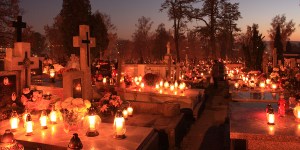Lenten Campaign 2025
This content is free of charge, as are all our articles.
Support us with a donation that is tax-deductible and enable us to continue to reach millions of readers.
November begins with two unique liturgical celebrations in the Church's calendar. All Saints Day starts off the month with a holy day of obligation, when Catholics are required to attend Mass.
Immediately following All Saints Day is All Souls Day, a liturgical commemoration that honors all the deceased.
While priests are able to celebrate three separate Masses on this day, making it easier to attend Mass for many parishioners, it is not a holy day of obligation.
This means that while Catholics are encouraged to attend one of the special Masses on All Souls Day, they are not obliged to do so.
The official name for November 2 is The Commemoration of All the Faithful Departed. Liturgically, it is neither a solemnity nor a feast day.
The Code of Canon Law lists holy days of obligation under the heading “Feast Days,” and they typically feature the singing of the Gloria at Mass. They are days of jubilation, and priests will typically wear white or gold vestments on these days.
On the other hand, All Souls Day is a memorial. a day of calling to mind those who have died. This day can have a penitential character, when we pray and make sacrifices for the souls in purgatory. Priests might wear the color violet or even black on All Souls Day, indicating this memorial and penitential character.
All Souls Day is a rich tradition in the Catholic Church, and while it may not be a holy day of obligation, it certainly deserves to be observed in any way that we can.









